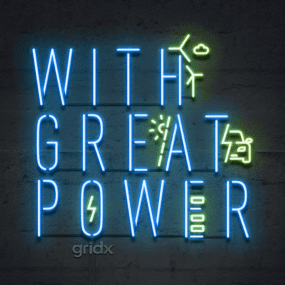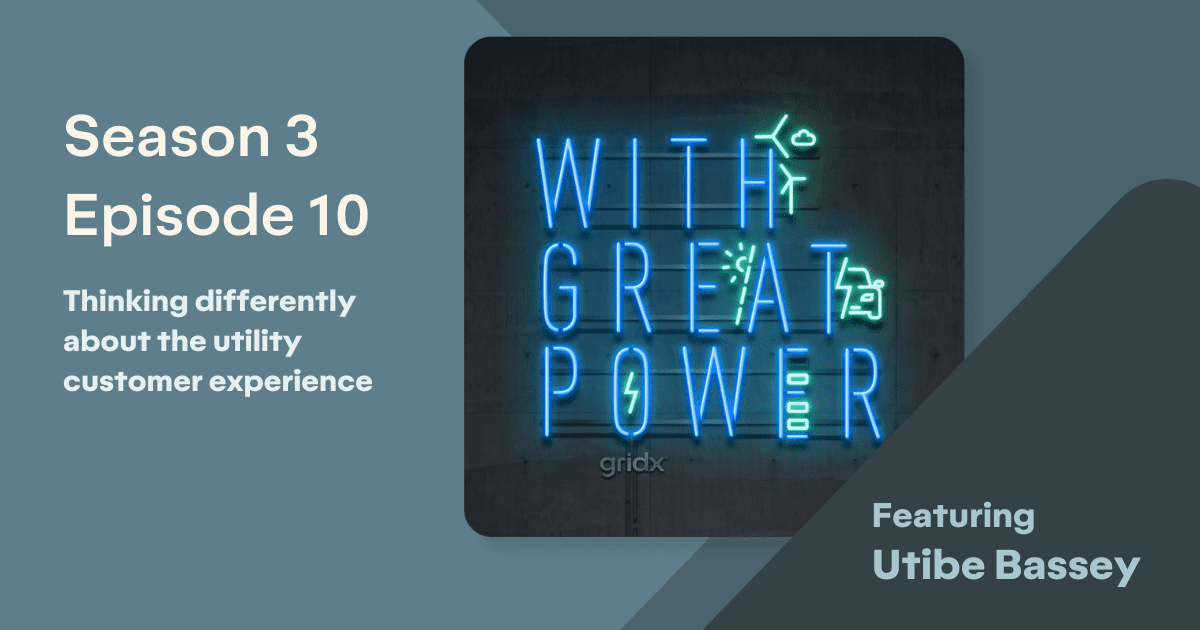Getting innovators to “fail fast” in the energy industry
Kim Getgen founded InnovationForce as a safe place for engineers to develop ideas in the energy startup space.

Innovation isn’t just about good ideas. It’s about workflow.
For Kim Getgen, when new technologies are tested and deployed (or rejected) using vetted workflows, companies can try new things with great success – even in the risk-averse utility industry.
That’s why Getgen founded InnovationForce in 2021. This software-as-a-service company is designed to support new ideas — and the “intrapreneurs” who champion them — and prevent them from falling into what Getgen calls pilot purgatory. That’s where “new and truly transformative ideas inside a utility go to die,” she said.
The urgency of decarbonization, which requires utilities to deploy new technologies quickly and safely, motivated her to start the company, Getgen said on a recent episode of With Great Power. She also wanted to make idea generation within organizations more democratic.
After trying and failing to advance new ideas while working in large organizations, Getgen started to burn out – a problem her dad faced as a pipefitter in the 80s and 90s.
“He would come up with really great ideas,” she said, and because he worked so closely with customers, he had insights that his bosses lacked. “He was very service oriented and he would come back with ideas or ways that would make his colleagues’ jobs better or safer or the customers’ experience better, and he was ignored because he was wearing a blue shirt.”
Getgen believes the infrastructure for advancing ideas inside companies is often broken. “It’s a process problem, not a me problem,” she said.
The InnovationForce platform was built using decades worth of data that behavioral scientist and Harvard Business School professor Linda Hill gathered from more than 100 clients from her consulting firm Paradox Strategies. Hill co-founded InnovationForce with Getgen.
InnovationForce uses AI to measure and predict the success of any given innovation, which are vetted by a subject matter expert and workplace peers. The InnovationForce software guides this process using a leadership model called creative abrasion, which brings together different points of view in order to manage conflicts on any given idea or solution.
Getgen said this creates “a safe place for engineers in particular to feel safe to push back on each other’s ideas and have really good constructive debate.”
The hope is that creative abrasion fosters feedback from each member of a team and by weighing input equally. Getgen says the frustration of having ideas rejected without understanding the reason creates a psychologically difficult workplace.
Does it work?
But does all of this translate into a faster, more effective piloting process for new innovations? Portland General Electric, the Portland, Oregon-based utility and InnovationForce’s first customer, is bullish. Allegra Hodges, the utility’s head of strategic innovation, claims the platform “accelerated the time to innovate” by 65% over the course of 18 months and was used to vet over 150 pilot candidates. Ideas moved ahead or were nixed quickly, rather than languishing.
Getgen says outside of those findings, it’s hard to quantify the platform’s wider potential impact; across the entire energy sector, pilots launch and fall into purgatory all the time. But seven common mistakes often bog pilots down, according to InnovationForce:
1: Piloting under the radar with the wrong resources or approvals.
2: Piloting in silos when cross-department collaboration is needed.
3: Never landing or completing a pilot.
4: Not capturing and sharing learnings broadly.
5: No test plan.
6: No clear challenge statement.
7: No clear understanding of the urgency.
In mid-May, the Centre for Energy Advancement Through Innovation, a network of more than 150 organizations in the utility sector, made InnovationForce available to its members. Getgen hopes that as more utilities use the platform, it will build a much larger dataset to measure impact, and tweak its approach.
Portland General Electric’s Hodges said teams using the platform have become more confident to pursue new ideas, and that six of the new technologies have been recommended to proceed beyond the pilot stage.
If everyone across the organization – from lineworkers to customer service representatives – starts to feel more empowered to voice their ideas, it’s a win for Getgen.
“It is intended to reach everyone, not just the C suite. But all the way down to the front line,” she said.
For the full conversation with Kim Getgen, listen to her interview on season 3 of With Great Power.
With Great Power is a show about the people building the future grid, today. It’s a co-production of GridX and Latitude Studios. Subscribe on Apple, Spotify, or anywhere you get your shows.
The original article can be found here.




